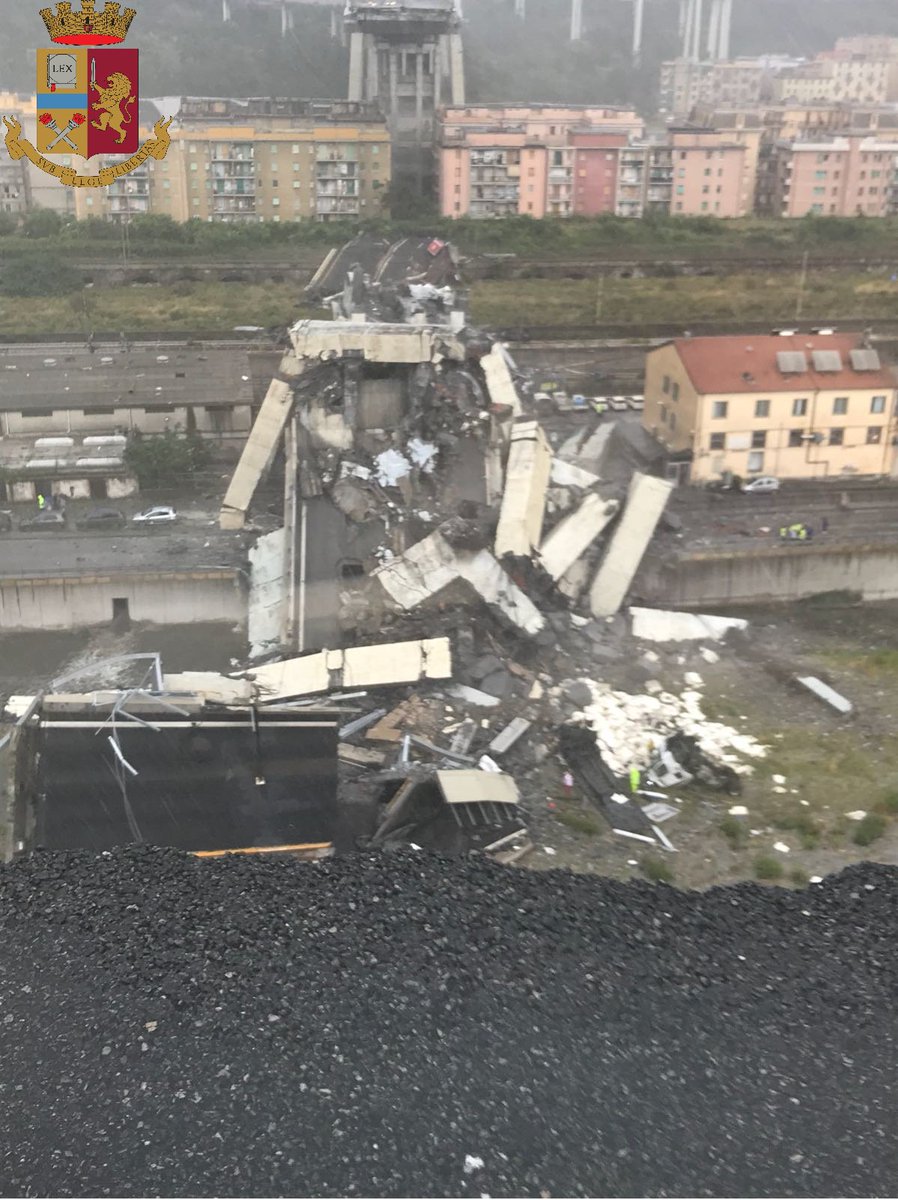Watch Video: Italy disaster sparks Canadian infrastructure concerns
By Leeanna McLean, Digital Reporter for The Weather Network
A 50-metre high section of the bridge, including a tower that anchored several stays, crashed down with as many as 35 vehicles driving on it in torrential rain. Huge slabs of reinforced concrete plunged onto two warehouses, train tracks and a riverbed.
PHOTOS: Devastating bridge collapse in Genoa, Italy.
While the official cause of this tragic event remains under investigation, The Weather Network spoke with Doug Perovic, Professor of Materials Science and Engineering at the University of Toronto, to discuss possible contributing factors behind this catastrophic collapse.
“From the information that I’ve gathered it appears that this bridge, which has been under maintenance for many years now, has suffered some form of degradation. It sounds like degradation of the concrete, which is reinforced with steel bars,” said Perovic. “There’s question about the design and again, I’ve also read some commentary coming out of Italy, that says the reinforcement bars weren’t properly insulated or coded to prevent corrosion attack with the concrete.”The 1.2 km-long bridge was completed in 1967 and overhauled in 2016. The motorway it carries is a major artery from northern Italy’s industrial centres to the Italian Riviera and to France’s southern coast.
“You’ve got loading on there, this is a heavily travelled bridge I understand. So, there would have been repetitive loading that induces further sort of cumulative damage — they call that fatigue — but that shouldn’t cause a bridge to fail,” said the engineering professor. “This bridge should not have failed under these conditions. They are designed to have a margin of safety above what is normally expected, including windstorms, and if this was totally packed with cars, it should still not fail.”
Wind gusts up to 65 km/h were reported in the area at the time of the collapse. Some witnesses say they saw lightning strike the bridge moments before it crumbled.
However, a lightning strike “isn’t going to bring a bridge down,” Perovic highlighted.
BELOW: Moment Italy bridge collapses caught on camera
“It really was a perfect storm, pardon the pun. The structure was already weakened after years of deterioration. A heavy wind gust at that very moment was enough to sort of just take it over the edge. So, that was the sort of last trigger that led to this collapse.”
There are two things that need to be carefully addressed in this investigation, according to Perovic.
“Rain and wind should not have caused this to fail as far as degradation. Materials don’t last forever, they do degrade. So, there either needs to be materials incorporated in a bridge that don’t degrade for a bridge’s lifetime, whatever that’s defined to be, or there needs to be a stringent maintenance program to replace degraded materials and components in a sufficient amount of time before they become critical and could cause a failure.”
In a 2016 interview posted online, University of Genoa professor specializing in reinforced concrete construction Antonio Brencich, said the bridge required continuous maintenance and would eventually have to be torn down and replaced.
When a bridge requires an excessive amount of care and attention, this can become a major problem, added the professor.
“There comes a point where a decision needs to be made. Is it going to be economical, but more importantly, is it going to be a safety issue and we may actually have to cut our losses and tear this bridge down because we may miss some important aspects of deterioration, which may have happened here.”
The engineering professor predicts officials will likely tear down what is left of the bridge and rebuild something entirely new if a deterioration problem is identified.
Riccardo Morandi, who designed the so-called Morandi bridge in Italy, is also responsible for the Lake Maracaibo bridge in Venezuela. There are concerns that the Maracaibo bridge may face a similar fate.
“I’m sure they are going to look at that design by this person, with the same supposed deterioration problems,” said Perovic. “Those decisions have to be made in terms of OK what is the remaining lifetime of a structure, and let’s take this thing out of service if we think there may be a problem.”
While this disaster is tragic, Perovic said it makes officials examine the integrity of infrastructure closer to home. Take Toronto’s Gardiner Expressway for example.
“I teach that [Gardiner] as a case study in my forensic engineering course all of the time,” he said. “That was designed back in the 50s. It’s also a reinforced concrete structure, but it wasn’t designed to be used with road salt. So, that’s something that came after the fact, and that road salt then leaches into the concrete, swells those reinforcement bars and causes big chunks to break off and fall to the Lakeshore below, which we have heard about for many years.”
Falling debris can cause serious injury, but the question is, are we looking at future structural collapse?
“I don’t think so, I think our engineers are on top of that quite diligently,” he said. “But, we really need to spend money and not sort of take chances.”
With reports from Reuters
